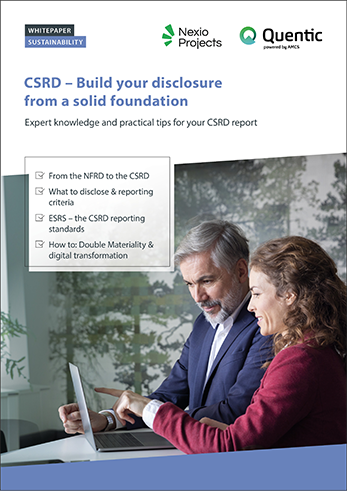If your company is not currently subject to non-financial disclosure obligations, here are the three key steps to help you prepare for this change in European regulations.
1. Extend your regulatory monitoring to cover your ESG issues
As regulations are being developed, you will need to adapt your EHSQ regulatory monitoring system to include ESG topics. You can subscribe to an ESG monitoring platform and add the content you consider relevant to your current monitoring.
For effective review, you need to create compliance tasks related to these requirements or recommendations, to be able to assign them to the people responsible for evaluating them, and then to be able to create the corresponding preventive/corrective action plans. Some companies have used ISO 26000 and/or GRI guidelines to help improve their sustainability management system.
2. Identify the significant impacts and risks associated with your ESG issues
Start collecting your ESG data as soon as possible so that you are not caught off guard and can quickly make an initial internal assessment in terms of:
- Availability and quality of required data and information;
- Impacts, risks, and opportunities related to your activities and locations, with a focus on Double Materiality;
- ESG performance.
As mentioned, the CSRD requirements for ESG reporting cover the company’s entire value chain. As a result, collecting, assessing, and reporting data can quickly become a daunting task. For this step, it may be necessary to seek assistance from specialized consulting firms and consider acquiring an expert software solution to:
- Conduct stakeholder mapping;
- Transcribe and perform your Double Materiality assessment;
- Incorporate the ESG reporting indicators required by the CSRD;
- Set up and manage your internal collection, validation, and consolidation processes.
3. CSRD Scope 3 Emissions: Carry out a GHG emissions assessment
Some companies already calculate their carbon footprint. They will be able to capitalize on their more recent GHG emissions report and extend it to scope 3 as required by the CSRD. For the others, a first step based on carbon footprint on scopes 1 and 2 will likely be the right approach, once again with the aim of gradually bringing smaller companies in line with these new regulations.








